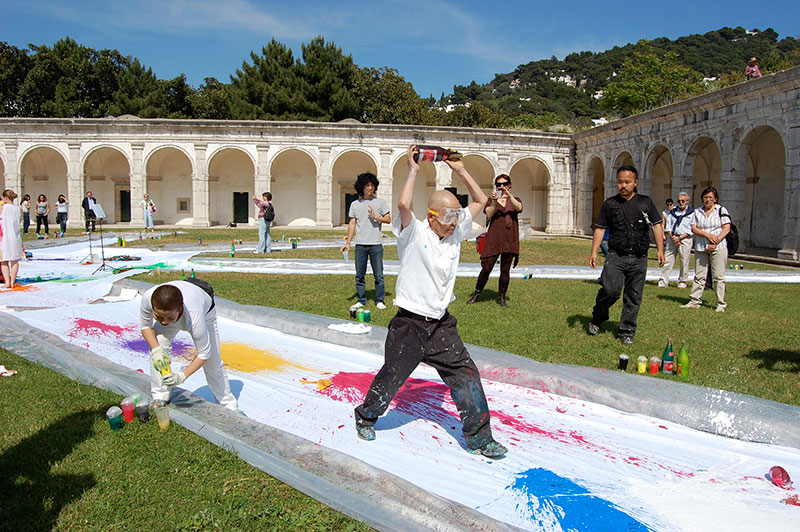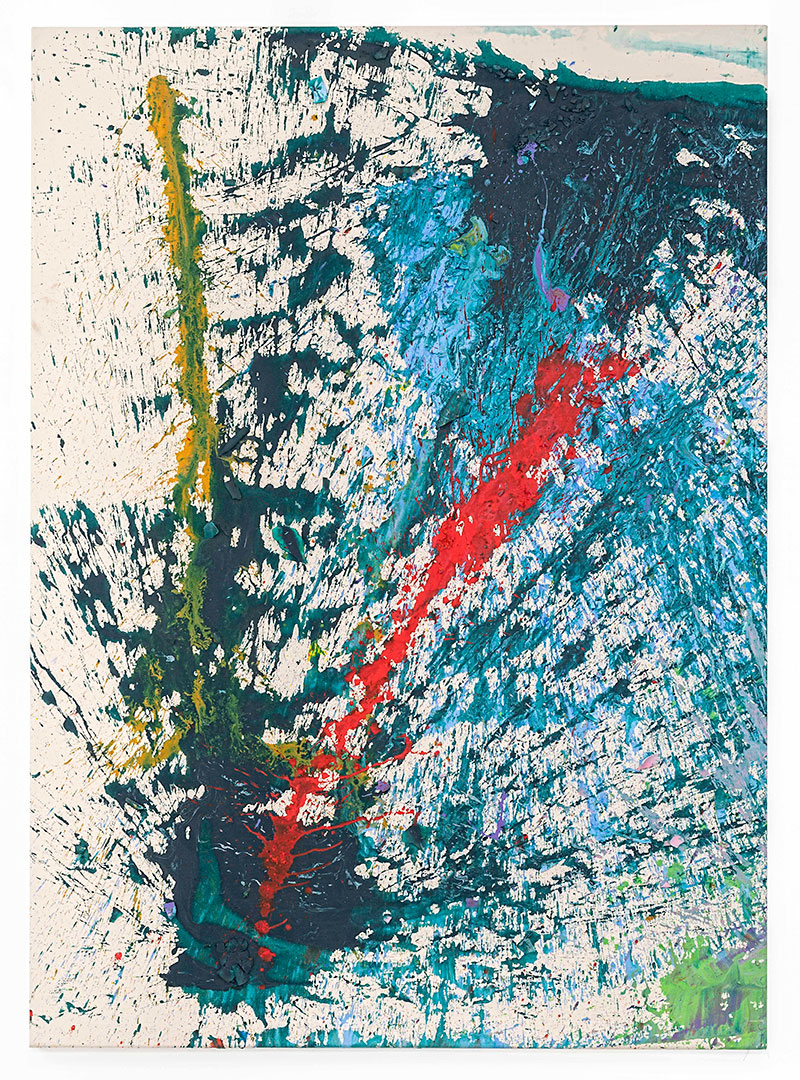Cardi Gallery – Shozo Shimamoto
Cardi Gallery’s solo exhibition of Shozo Shimamoto in Milan draws to a close this weekend. Showcasing a significant number of works, with particular focus on the late production of the artist, the show explores the various interconnections between the artist’s paintings and performances. Artvisor’s founder Piero Tomassoni will be contributing an essay for the upcoming catalogue.
Shimamoto was co-founder of the Gutai movement; a group that formed in the 1950s following a period of unrest and challenge to authority in Japan. The Gutai group most likely influenced subsequent innovations in European and American experimental practices, including Jackson Pollock and Mark Rothko.
Three years after its creation in 1954, the group produced the Gutai Stage Exhibition: it was the first time the stage was used as a living artistic space. During the performance, enriched by sounds, cranes and weapons, works were created by a shooting cannon, manufactured by Shimamoto himself. Conceiving the artwork as a result of a social and collective effort, Shimamoto would then invite other artists to experiment with and contribute towards such performances.
Shimamoto’s renowned technique, termed the ‘bottle crash’, often included the use of cans and other unconventional media to apply paint to a large surface area. The overall result is generated by chance, but the gesture and its spectacularity are carefully orchestrated by the artist in advance.
Shozo Shimamoto was born in Osaka in 1928. After attending the University of Kwansei Gakuin, he became famous as the founder of the Gutai movement in the 1950s. His works are featured in important exhibitions and museum collections worldwide. Nominated for the Nobel Peace Prize in 1996, Shimamoto died in Osaka in 2013 at the age of 85.
Selected Exhibitions
Solomon R. Guggenheim Museum, New York; Modern Museet, Stockholm; Museum of Contemporary Art, Los Angeles; Jeu de Paume, Paris; National Art Center, Tokyo; Seattle Museum, Washington and The Getty Research Institute, Los Angeles.
Selected Collections
The Art Institute of Chicago, Illinois; The Tate Modern, London; The National Museum of Modern Art of Rome, Italy; Ca’ Pesaro International Gallery of Modern Art, Venice; and the Tokyo Contemporary Art Museum, Japan.


